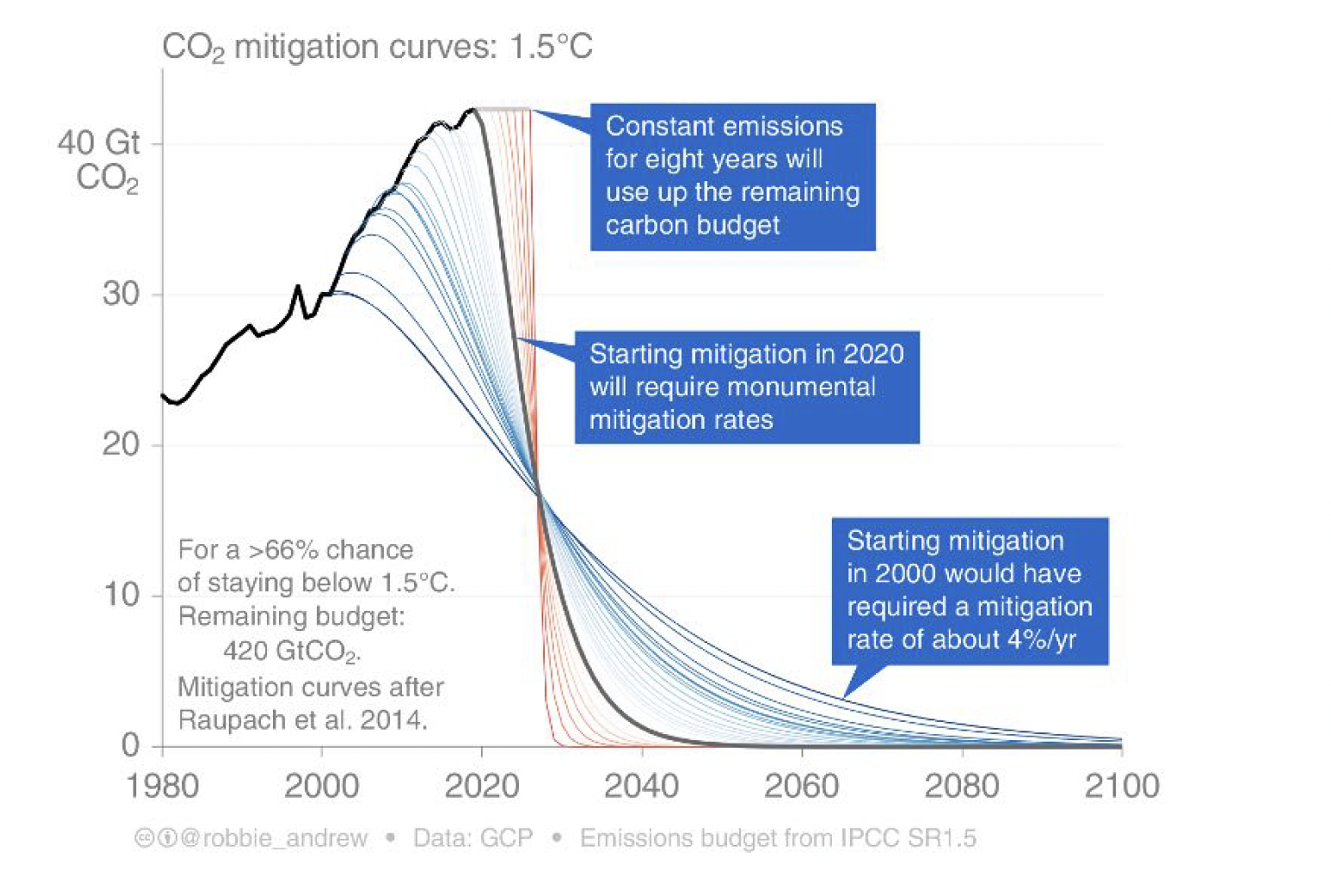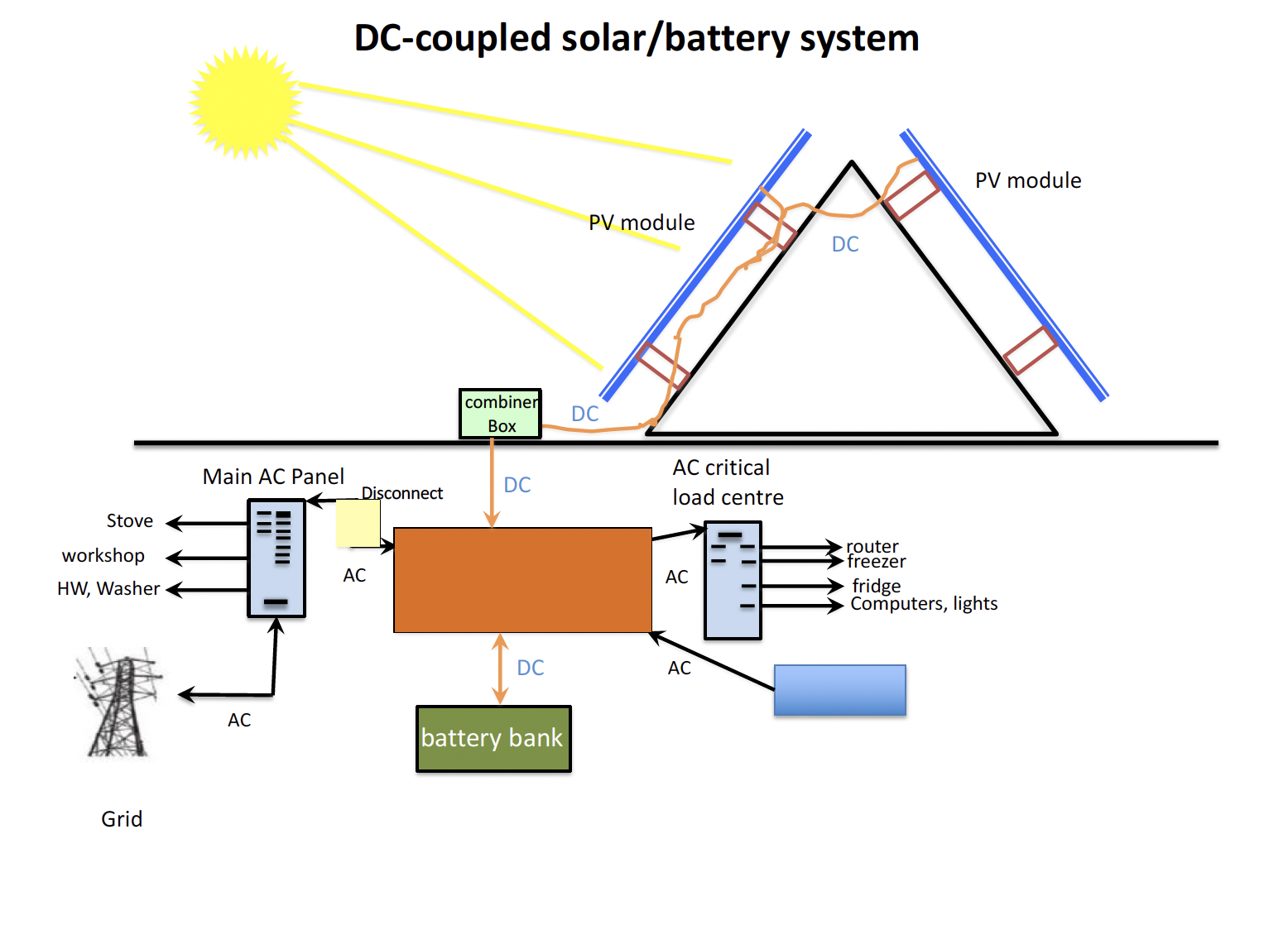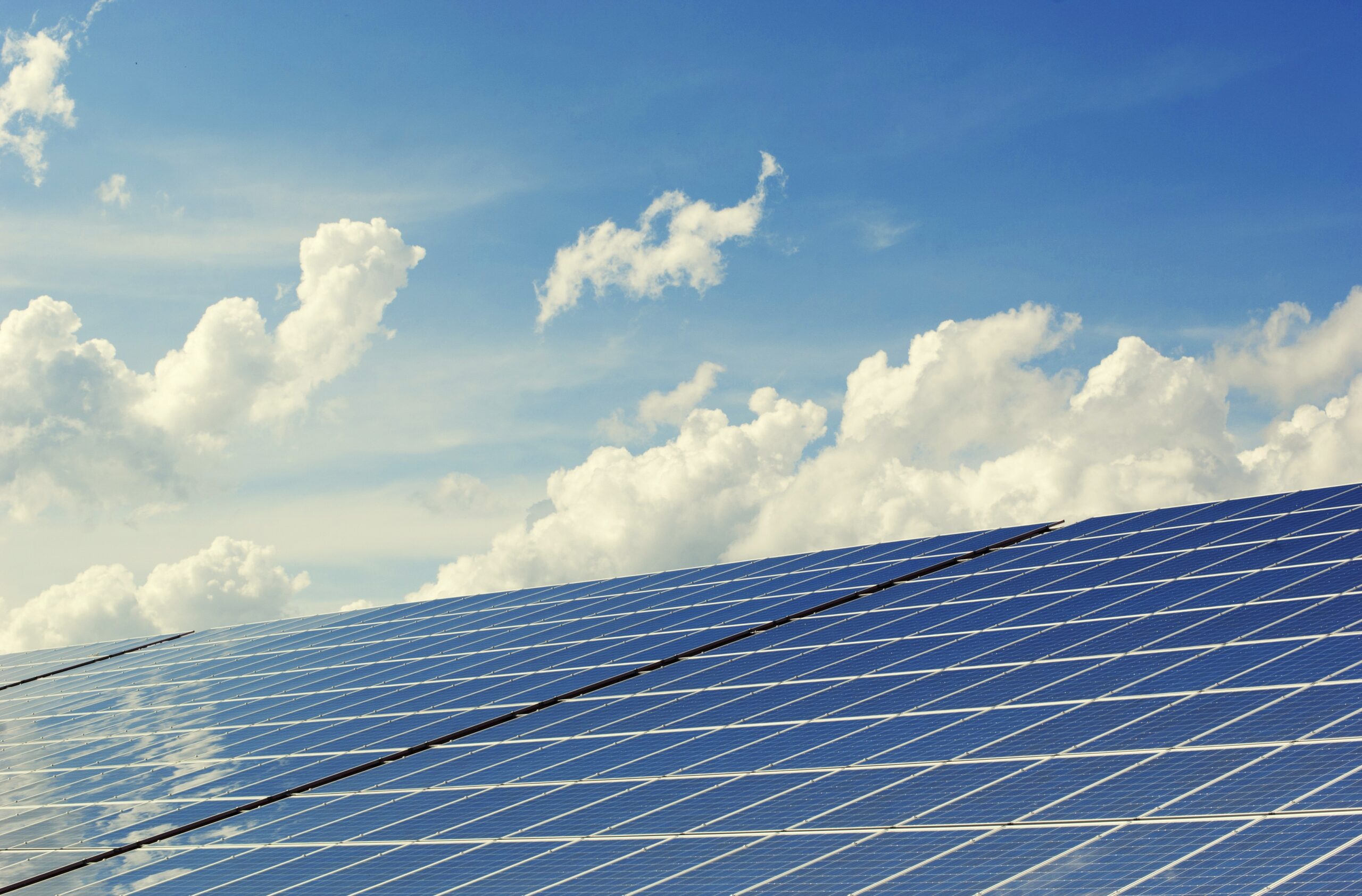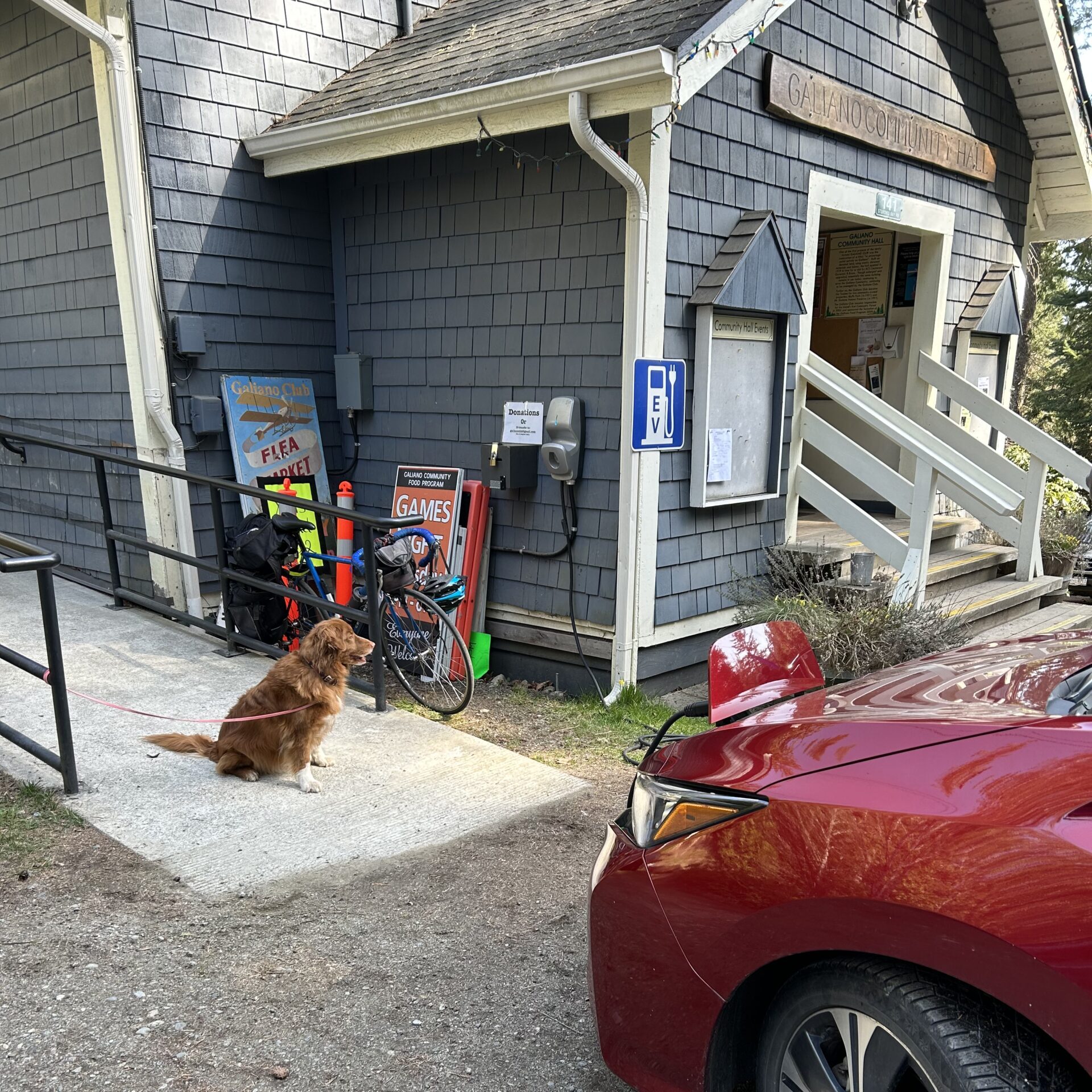By Kjell Liem (Saltspring Island) and Tom Mommsen (Galiano Island)
BC communities are starting to embrace solar energy and a solar revolution seems imminent: Solar energy is a local solution to our energy needs, keeps valuable energy dollars in the community, is environmentally friendly, control rests with the locals and it creates much needed local employment at a time when many traditional areas of the economy are struggling. In the last decade, different types of community solar projects have evolved all over the world, with BC lagging behind. However, enthusiasm and knowledge about solar energy are growing rapidly and as we show below, BC communities are now taking major strides to catch up. These efforts have one thing in common: Initiative comes from the bottom up, i.e. from citizens, communities, regional districts, municipalities and local small utilities. These are the essential driving forces and demonstrate true leadership to address climate change, without reliance on or limited help from provincial or federal governments. At the time of writing, all Western provinces have some sort of direct support for solar. Alas, BC is dragging its heels and the only crumb is a PST exemption for solar equipment from former premier Gordon Campbell’s time, instead of embracing and supporting the new economic reality, job creation, and low carbon economic development mandate (and commitments to the Paris Agreement).
The case for solar electricity
In recent years, electricity production from photovoltaic (PV) panels has become highly cost-effective and its cost will only decrease in the future, irrespective of what producers of competing fossil fuel technologies claim. Luckily, input for solar will remain free of charge for another few billion years or so, guaranteed. During 2016, the cost of unsubsidized1 utility-scale PV electricity fell to between 3.2 and 4 cents (CAD) per kilo-Watt-hour (kWh) in places like southern California, northern Chile and Abu Dhabi. Singling out Abu Dhabi, we admit that the Persian Gulf region (3462 h/y) receives 50% more annual sunshine than, say, Dawson Creek, BC (2213 h/y) and we can’t really expect similar pricing for BC. However, PV modules perform better at lower temperatures and hence if corrected for temperature, a PV array in Abu Dhabi only produces 30% more solar electricity than one in Dawson Creek. Plus, cleaning of the PV arrays after sandstorms built into the cost for Abu Dhabi, does not really apply to Dawson Creek, further compensating for the lower sunshine hours in BC. Besides, Dawson Creek is not even the sunniest place in BC! In other words, BC is a pretty good place to go solar and at a very competitive price.
Although most of the photovoltaic (PV) panels are a pleasing blue, they are in fact one of the greenest methods to produce electricity: PV’s footprint of 10 – 40 g of carbon dioxide (CO2) release per kWh produced is only beaten by wind (5-25 g CO2/kWh), putting hydroelectricity2 (273 g CO2e/kWh), and fossil fuels (natural gas: 500-620 g CO2/kWh; oil: 745 g CO2/kWh; coal 1050 g CO2/kWh) back into the dark corners where they belong. And this is even before the societal (externalized) costs of the competing energies (air pollution, respiratory diseases, pipeline leaks, tanker spill clean-ups, fugitive emissions, ocean acidification, blowouts, etc.) are considered. Installed PV needs minimal maintenance, does not make any sound, is free of emissions, and its life expectancy easily exceeds 35 years.
In addition, local electricity production by PV means local control, imparts a sense of local ownership, at least partial energy autonomy and represents a collective vision that is there for all to see. O.k. so the sun does not always shine and the wind does not always blow, but the criticism of intermittency often leveled against renewable energies is rendered baseless by the extremely rapid advances in multiple storage methods, including batteries and pumped storage. BC’s existing “legacy dams” allow us to keep the reservoirs full in the sunny months, ready to dispatch when other renewables are not available. We can also use extra hydro to help bring out of province fossil fuel generators offline. Pumped storage is an obvious choice for BC and is likely to mitigate other effects of climate change such as unpredictable rainfall patterns, timing of freshet, and variability of snowpack. Finally, as demonstrated all over the world, technical problems to integrate large amounts of renewables into the grid have been solved and continue to exist only in the minds of internet trolls, old-style utilities and grid operators.
Why community solar?
Advantages of community-scale solar include: cost efficiency due to economies of scale; local generation that avoids transmission losses; distributed generation that decreases the load on the grid avoiding transmission costs; easier access to financing; and low risk on account of the maturity and longevity of the technology. As mentioned already, community solar buoys local economies by creating local jobs, local investment, recycling energy dollars locally and leaving control over important energy decisions in the community. To top this off, non-monetary values, like pride in a community enterprise, information sharing and education about electricity production and energy usage come into play.
Community Solar PV in British Columbia
In the following, we attempt to categorize, in broad strokes, several models for community solar that have been successful in getting those solar panels installed and in producing truly clean electricity for the public’s and the planet’s benefit. Our focus was squarely on demonstrating the diversity of approaches and not on providing a complete list of examples. Unfortunately, due to the nature of the topic, we cannot totally avoid the use of some jargon. For this we apologize profusely, but we try to make amends by appending a short glossary.
- Municipal and regional district ownership: The first large scale solar installation in BC (2015) was the city of Kimberley’s SunMine, a 1 megaWatt (MW) solar farm built on a retired mine site in Southeastern BC. The project, which has the landbase to expand to 20 MW, includes some fancy engineering, since the modules fully track the sun, daily and throughout the seasons, so that the sun hits the modules always under ideal (90 °) conditions. Some great holistic thinking as well, as the project used the previous electrical infrastructure from the mine to connect to the grid. For the SunMine, the municipality of Kimberley, Teck (the previous owner of the mine), the Province of BC and other partners (Ecosmart, College of the Rockies, Columbia Basin Trust, Southern Interior Development Initiative Trust and BC Hydro) came together to make it all happen. On a slightly different scale, a solar array on the firehall in Colwood also fits this model, as does the solar PV recently installed at the Bings Creek recycling center near Duncan by the Cowichan Valley Regional District. Further up the big island, the Comox Valley Regional District has four demonstration sites for solar PV and a handy short video on their website, explaining grid-tied systems and BC Hydro’s net metering program.
- Community ownership: An excellent example of a non-municipal local project is the T’Sou-ke Nation’s groundbreaking solar installation that has been working flawlessly since 2009 and is also very pleasant on the eye, since native design has been integrated into the roof array. Off-grid Lasqueti Island operates a solar-based micro grid for its health clinic and school. The Solar Colwood program is another example of a local government getting behind solar – qualifying as a community effort, but with federal funding. Funded through the Union of BC Municipalities, the community of Alert Bay on Cormorant Island very recently installed solar arrays with a total peak capacity of 79 kW on five public buildings. The shared prize for the largest community-owned solar projects in BC probably goes to the Okanagan Skaha School District for their 120 kW installation on the Penticton Secondary School and the Lower Nicola Indian Band of the Nlaka’pamux Nation who installed 86 kW of PV on their school’s gym in 2016, financed through the band-owned development corporation. Energy Solutions for Vancouver Island (ESVI) – a registered society mostly in the Nanaimo area – has initiated community solar PV energy demonstration projects in preparation for the launching of the for-profit Island Community Solar Cooperative (this spring). The first of these installations is located on the Nanaimo Foodshare building in Nanaimo. As funds are being found, other demonstration projects are being considered for locations from Ladysmith to Parksville. With assistance from Bullfrog Power, the Swiilawiid Solar Initiative on Haida Gwaii is constructing three solar arrays at local youth camps, adding to the 172 kW of PV being installed on six public buildings around the islands and the two PV arrays already in operation on Sk’aadgaa Naay Elementary School and Gidgalan Kuuyas Naay Secondary School. Stretching the idea of community ownership a bit, Okanagan College has two impressive PV arrays of 194 kW and 258 kW at their Kelowna and Penticton campuses, respectively. These arrays will be instrumental in helping the college to reach their net-zero goal by 2025 and shows just what is feasible on large roofs. The British Columbia Institute of Technology (BCIT) installed a solar canopy over a parking lot that is used for research into the design of microgrids and to advance technologies in fast charging of electric vehicles.
- Residential bulk purchases have been popular in the Cowichan Valley – enabled by the efforts of Viridian Energy Co-op – and on Galiano Island, Saltspring Island, and the Sunshine Coast, driven by local residents. For instance, on Galiano a total of 303 modules were installed in 15 residential systems in 2015/2016, with an overall capacity of close to 80 kW. In the first year of operation alone, the electricity produced by these systems prevented the emission of about 58 tonnes of carbon dioxide; other communities like Squamish are rumored to be following suit. GabEnergy‘s community model on Gabriola Island continues to give solar enthusiasts access to competitive pricing on equipment and their website is an excellent source of useful information on solar PV. As well as providing hardware and training, over the last few years, GabEnergy was instrumental in the installation of well over 2000 PV modules on and off their little island and one can only hope that their infectious enthusiasm about PV will continue spreading to the nearby areas of Vancouver Island and beyond. From a historical perspective, the Suzuki Foundation mentioned the bulk purchase concept in a Net Metering papercalled Clean Power at Home as early as 1999.
- PV on community buildings: A prime example is the Solar Scholarship project on Saltspring Island, supported by donations from solar enthusiasts on Saltspring and surrounding islands, a grant from the Provincial Carbon Neutral Capital Grant program, Salt Spring Island Foundation, Bullfrog Power as well as many other local groups and individuals. Since going live in late 2014, the 21 kW installation on the roof of the Saltspring Island high school has produced over 55,000 kWh of electricity, and contributed over $5700 to solar scholarships for local students. The electricity generated would power a Nissan LEAF electric car over 350,000 km! A short distance from Salt Spring across Swanson Channel, the Pender Solar Initiative 2020 (PSI2020) has the stated goal to install PV systems on the roofs of every suitable public building on Pender Island by 2020 and they are well on their way: the islanders originally installed 39 modules on the Pender Island recycling depot, followed by recent inauguration of a 105 panel array at Pender Island Elementary, which will be augmented by a 10 kW system at the Pender library this spring. The local thrift store provided key funding for the hardware at the recycling depot, while labour was covered by the Capital Regional District (CRD). For the school project, PSI2020 teamed up with Bullfrog Power, the CRD, the Parents Advisory Committee, School District #64 and the Victoria Foundation to make it all happen. The original Solar for Schools program fit this model and included financial support by the provincial government. Unfortunately, this initiative was discontinued. Luckily, Dave Howe, the elected CRD director for the Southern Gulf Islands is championing the installation of ‘PV systems on the roofs of all suitable public buildings on Mayne, Galiano, and Saturna by 2019’.
- Solar on Strata: Any commonly owned building like your clubhouse or strata condominium may be suitable for solar PV if it is on one of the more expensive residential rates. The first examples of this model were developed in the lower mainland by Vancouver Renewable Energy Co-op (VREC) while a recent well-documented PV installation in Victoria was established by Bruce Mackenzie, a longtime member of the BC Sustainable Energy Association (BCSEA).
- Solar Shares: Vancouver Renewable Energy Co-operative, a worker owned co-op has developed Solshare, an incorporated company offering class C2 investment shares in a leasing program available province-wide. Host sites sign a lease agreement, paying a small premium for the solar electricity, but this is offset by lower electricity price increases in future years and provides immediate tax incentives since buildings with PV tend to qualify for LEED certification.
- Solar Gardens: Customers of Nelson Hydro, one of the few independent utilities in British Columbia, purchased solar panels for a Nelson Hydro property with the utility taking care of procurement, installation and administration of the solar garden. Locals embraced the option to purchase panels with enthusiasm and their 60 kW PV array will go ‘live’ in early spring 2017. Participants will see electricity produced by ‘their’ panels credited to their individual electricity accounts as an example of Community Net Metering. The Nelson installation also exemplifies a) what dedicated members of a community can achieve in cooperation with a forward-looking utility and b) the impressive speed to go from concept to reality. Less than two years after the first community meetings, the installation will start producing truly clean electricity. Early in 2017, Summerland will also be starting community engagement with the goal of establishing a solar garden, possibly modeled after the approach taken by Nelson, while New Westminister is working on a similar initiative.
- Solar Co-op’s exist in Ontario with its generous, albeit declining, feed-in-tariff. Also known as a producers Co-op, there has been a lot of interest in this model, especially with BC Hydro’s new Micro-Standing Offer Program, which aims to reduce interconnection costs for community projects in the 100 kW to 1 MW range. The Peace Energy Co-op got an early start with their involvement in the Bear Mountain wind development in the north-east of the province and are now providing professional solar installation. Some workers’ co-ops exist, notably Viridian Energy on Vancouver Island, and VREC in Vancouver, while the already mentioned Energy Solutions for Vancouver Island society is in the process of creating a for-profit clean energy co-op in the Nanaimo area.
Challenges and other considerations
No doubt we’ve overlooked some excellent projects. As always, the depicted models have their strengths and weaknesses, but all are evolving quite quickly and doing their bit towards decarbonization of energy. Bulk purchase initiatives for example, can be wild beasts, driven by good intentions, some healthy ambition, and involve a lot of – admittedly satisfying – work. Along the way, many lessons are learned, some painful, some surprising, but nothing can take away from the satisfaction felt when the first few kilowatthours of production are recorded and celebrated. However, many things are common to all. Solar installations need a quality site to realize excellent production. As such, they should be located away from shade so the panels can do what they were designed to do, turn light into electricity. If your house is in the middle of the forest, it might be a lot more productive to develop a community solar garden on a sun-drenched site than to reach for the chainsaw.
Clearly, the appetite for solar PV is growing in BC, it just needs to be tapped and community efforts are a most promising and likely least expensive route to go. Detailed planning is absolutely essential, including a solid business plan. It really helps if the project’s economics work: competitive pricing eases funding. Even small contributions from parties like any level of government can take a project from ‘may-be’ to ‘yes’. Fortunately, prices for solar PV continue to decrease. Ownership and maintenance concerns need to be addressed in detail. Along the way, regulatory issues may raise their head. Maybe what your community really wants is to start a utility. Alas, not everyone gets a toe into that particular pool: the electricity business is highly regulated in BC, so you’d better be a municipality or a regional district to go there, although some exemption may exist for small cooperatives. What about the electrical code? Not all red-seal electricians understand everything written in those big rule-books that keep changing as technology advances, and electrical inspectors are known to interpret the ‘code’ in many different, at times surprising and bewildering, ways. For public buildings and other community installations engineering requirements need to be examined and dovetailing with the local utility is a must. It would be interesting to learn why the exorbitant levies by the BC Safety Authority for solar PV are so far out of proportion with the low fees charged in Alberta or Ontario? Still, at this point, plenty of precedents have been set to get solid directions for your community’s dream solar project. Every community solar group we contacted was more than willing to share experiences, help with many aspects of the process, while praising the good and lamenting the not-so-good.
Apart from the indifferent attitudes of our provincial and federal governments to renewable energies, our own utility could provide a more conducive environment for solar PV. BC Hydro’s SOP and Micro-SOP initiatives look enticing on paper, but capacity is capped at 0.3%/year of total capacity. The caps have already reached for the next three years and no new projects are being considered. Worse, post 2020, neither cap nor pricing are available, making it difficult to plan ahead or develop a realistic financial prospectus. Especially considering the short turnaround for solar PV from plan to production, it would be helpful for BC Hydro to cooperate with communities in developing forward-looking models that ease the adaptation of community solar in BC. Nevertheless, these are obstacles that can be overcome with some innovative thinking and community engagement. Ah, community solar, a worthwhile challenge: great for the community and the planet, but nonetheless a challenge! However, when the sun shines and those trusty PV modules crank out the kilowatts – reliably, silently and inexpensively – it will be well worth the community effort.
Glossary:
kWh – kilowatthour. Under average solar conditions in BC, 1 kW of PV capacity will produce roughly 1050 kWh of electricity per year. On average, each BC household consumes about 11500 kWh per year. With conservation measures (LED lighting, insulation, decreased waste, efficient appliances, etc) this could be cut in half, meaning a 5 kW solar installation almost covers the annual electricity demands of a household. To drive your electric vehicle for 15,000 km per year, another couple of kW should be added. 5 kW (16 panels) of solar PV requires an area of about 280 sqft (26 m2).
Micro-Standing Offer Program (Micro SOP) – designed by BC Hydro for community ‘clean or renewable electricity’ projects between 100 kW and 1 MW. Micro-SOP may be in a unique category based on BC Hydro’s desire to support small community level generation.
MW – megaWatt (1000 kW). Capacity of an electrical installation to produce energy.
net metering – A practice by utilities that monitors the flow of electricity between a customer and the utility through a smart meter. At the end of a pre-determined period (usually 1 year), the utility tallies up the consumption and production of electricity by the customer; if the difference between consumption and production is negative, the customer receives a cheque or a credit on their account.
net zero – Usually applies to buildings. A net zero building is an energy efficient building where the amount of on-site renewable energy is at least equal to the energy consumed by the building.
PV – Photovoltaic; using a semiconductor to convert sunlight to electrical energy producing direct current (DC). For domestic use, this DC energy is usually turned into alternate current (AC) by an inverter.
SOP – Standing offer program – A program designed by BC Hydro to encourage ‘clean or renewable electricity’ projects between 100 kW and 15 MW. BC Hydro has imposed a common cap of 150 GWh per year to its SOP and MicroSOP programs; the cap has been reached already for the next three years. See also Micro SOP.
References
- https://cleantechnica.com/2016/09/20
- Scherer L & Pfister C (2016) Hydropower’s biogenic carbon footprint. PloS ONE 11:e0161947. doi:10/.1371/journal.pone.0161947 (Scherer & Pfister 2016).
12 March, 2017





